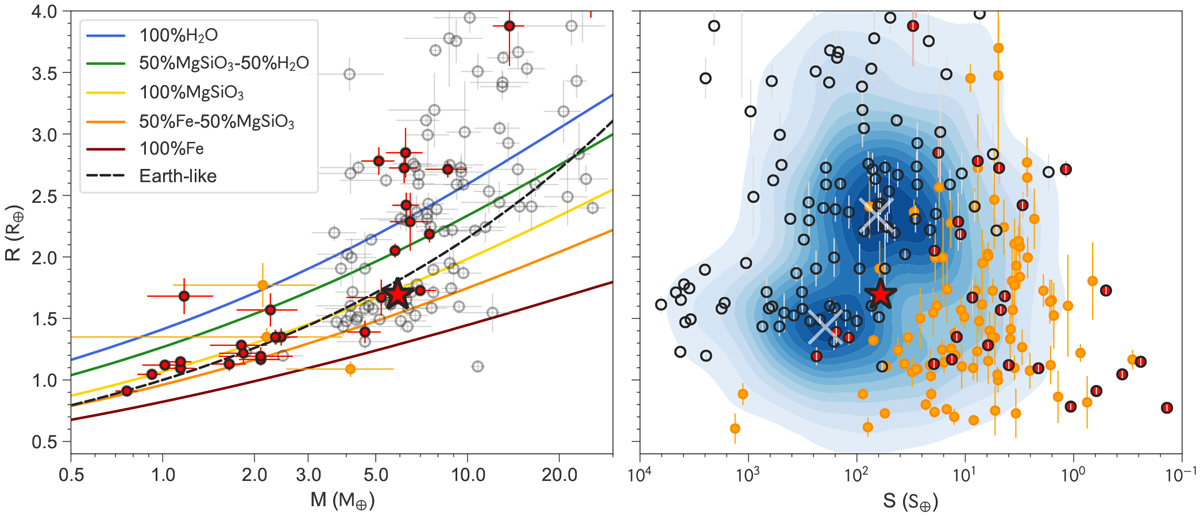Fig. 9

Mass-radius (left) and insolation-radius (right) diagrams in Earth units. In the two panels, open circles are transiting planets around F-, G-, and K-type stars with mass and radius measurement better than 30% from the TEPCat database of well-characterized planets (Southworth 2011), filled red circles are planets around M dwarfs with mass and radius measurement, filled yellow circles are planets around M dwarfs with mass determinations lower than 30% or without mass constraints at all (right panel only), and the red star is TOI-1235 b, whose radius and mass are determined with accuracies of 5 and 10%, respectively. In the left panel, the color lines are the theoretical R-M models of Zeng et al. (2016), and the three planets with mass determinations lower than 30% are K2–3 b, BD–17 588A b, and LHS 1815 b. In the right panel, we plot the R-S point density of all the known confirmed transiting planets with contours, and mini-Neptunes and super-Earths density maxima with white crosses. The M dwarf without mass determination in the radius gap is K2–104 b (Mann et al. 2017), a planet around an active star in the Praesepe cluster that is fainter by 5 mag in V than TOI-1235.
Current usage metrics show cumulative count of Article Views (full-text article views including HTML views, PDF and ePub downloads, according to the available data) and Abstracts Views on Vision4Press platform.
Data correspond to usage on the plateform after 2015. The current usage metrics is available 48-96 hours after online publication and is updated daily on week days.
Initial download of the metrics may take a while.


